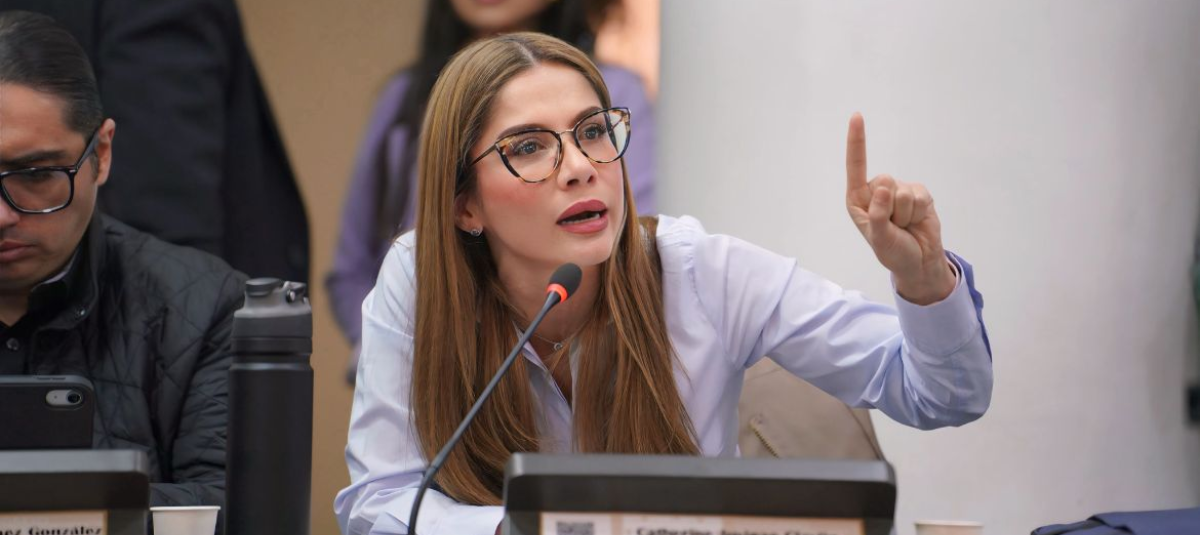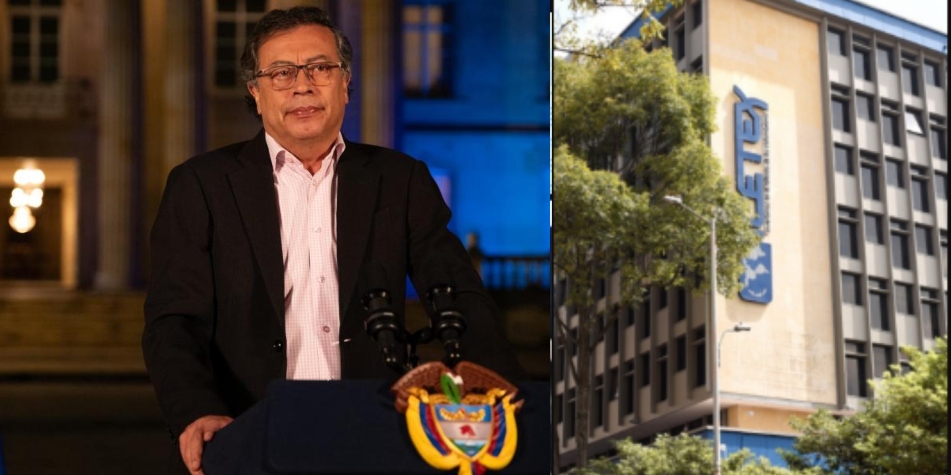The Icetex crisis deepens: The gradual disappearance of government aid and subsidies for students with educational loans

Once again, a new aid measure has been eliminated for Icetex users . This is the suspension of the interest rate subsidy for students currently pursuing their studies through an educational loan from the institution. This measure adds to many others announced by the institute in less than a year, and which has already affected hundreds of thousands of people.
The news, which affects 97,000 young Icetex users, was revealed by House Representative Catherine Juvinao: "97,000 additional users will lose the interest rate subsidy on Icetex loans in 2025-II. This is in addition to the 136,000 users who suffered cuts in 2025-I."
According to a petition filed by the congresswoman with Icetex, this is a new decision that will take effect in August of this year and stems from the fiscal crisis the state is experiencing, which has resulted in significant cuts to various sectors, including the institution's educational loans.
To understand this latest setback, it's important to note that last February, Icetex announced that it would stop providing interest rate subsidies to students in the repayment phase starting in the 2025-2026 semester. It also announced that it would stop granting new loans with these benefits, but would maintain the assistance for students in their studies.
The measure affected approximately 136,000 young people who were already receiving the benefit.
EL TIEMPO had access to the petition filed by Representative Juvinao, where Icetex responded that "as of June 30, 2025, the renewal of loans with interest rate subsidies was not affected during the first half of the year ... However, due to budgetary restrictions, the application of the interest rate subsidy will be suspended starting in the second month of August."
This means that a student who paid a monthly fee adjusted only with the CPI, will now have to pay with CPI + 12 or 17 additional points , which will significantly increase the value of their payments.
All of this, as well as other decisions, were made because the allocation given to Icetex from the National General Budget was significantly reduced.
As a result, Álvaro Urquijo, president of Icetex , spoke with EL TIEMPO a few weeks ago, in which he stated: “We are not immune to the fiscal crisis. We have had some resources cut from the government. But Icetex is self-sustaining; we don't depend on resources from the General National Budget (PGN) to survive, but rather on subsidized lines of credit. It doesn't affect Icetex's budget. Those are the resources that were affected.”
He added: "The nation's financial situation doesn't mean the disappearance of an entity like Icetex, which is self-sustaining. And that characteristic allows us, even though we don't have the same resources as the state, to seek other alternatives."

Álvaro Urquijo, president of Icetex Photo: Icetex
However, despite Urquijo's more optimistic stance, some point to President Gustavo Petro 's statements at the inauguration of the new legislature in Congress, suggesting that the decision to reduce resources is not temporary, but a government policy.
"This government's main public education policy is for young people to attend free public universities. We don't want to use the public treasury to subsidize private education. That's what previous governments did," the president stated.
The disappearance of aid and subsidies in Icetex Early last year, the then president of Icetex, Mauricio Toro, was preparing to leave the institution after a management that, although complicated and sometimes questioned, had achieved important changes for the institution, such as the launch of the "U Solidaria" (Solidarity U), through which many universities committed to covering student interest rates. The path was also paved for a historic waiver, not only of late payment interest but also of principal for a significant segment of users.
But everything would change during the months of October and November, when, due to a lack of resources and delays in disbursements by the Ministries of Finance and Education, more than 200,000 young people, all of them users of state-subsidized credit lines, were at risk of not being able to renew their loans for the 2025-2026 semester. It wasn't until the last minute that their renewal was guaranteed.
What didn't happen was the opening of a new call for credits under these lines, which was a major blow not only to universities but also to a significant number of young people who, faced with the lack of places at public universities (which, while growing, remain limited), see Icetex as their only way to study.
Given this, the 2025-2026 semester had the lowest number of new loan applications in decades. Thus, of the more than 60,000 loans granted throughout 2023, or the more than 50,000 granted in 2024, Icetex announced that only 10,000 loan applications will be made available for the entire year in 2025, all of them short- and medium-term, without interest rate subsidies, and also without the possibility of accessing the maintenance subsidies that the institute previously granted to vulnerable populations.
The lines that were not opened this year are those known as constitutionally protected loans, none other than educational loans with special conditions that were granted to low-income, Afro-descendant, and indigenous populations. That is, those who face the greatest difficulty accessing higher education and who saw Icetex as their only option for studying, given the limited availability of public universities.
This was confirmed by the Colombian Association of Universities (Ascun) , which represents the country's leading universities: "In a survey conducted by Ascun with its members, it was found that the loans allocated in 2025 only covered short- and medium-term modalities, without considering that long-term loans are what are especially needed by those in strata 1, 2, and 3, who find it difficult to pay their debts in short periods."
He added: "Additionally, the allocation of new loans was abruptly reduced in 2025. From the more than 50,000 offered in 2024, this year it dropped to 10,000 loans, a reduction of 80 percent."
For analysts like Ricardo Rodríguez, all of this, coupled with the recent decision to end the subsidized rate received by users during their payment periods, clearly implies "turning off the tap" for the institute, and, intentionally or not, puts the institution's future at risk: "Regardless of the government's intentions or motivations, the reality is that the state is trying to give Icetex fewer and fewer resources. It's true that it continues to contribute, but to keep its commitments to users during their school years, and, I believe, it was more due to the uproar caused at the end of last year."

Catherine Juvinao, representative of the Green Alliance. Photo: Catherine Juvinao Press
Various voices warn that what's happening with Icetex could completely shake up higher education in Colombia. 40,000 fewer credit slots, year after year, would put pressure on private universities, which in some cases depend on this institution for up to 80 percent of their enrollment, but also on public universities, which, despite the government's goal of creating 500,000 new slots, would lack the capacity to serve this population.
Universities are already looking for alternatives to Icetex Faced with this, private universities have had to find other ways to stay afloat and avoid a crisis, given that for some institutions, Icetex represents up to 80 percent of their students (this is without taking into account that for years the number of enrollments in private universities has been falling, except for a slight recovery in 2024).

The tweet Petro responded to was from an Antioquian doctor. Photo: Presidency / Archive EL TIEMPO
It is worth remembering that according to data from the National Higher Education Information System (SNIES) , private universities are registering 100,000 fewer undergraduate enrollments than seven years ago (a loss of 10 percent), so losing Icetex users would put the system's finances at risk.
Faced with such a critical situation, private universities have not stood idly by. One prime example of this is the Fondo Futuro (Future Fund ), created a few months ago by Medellín's main universities: CES, EIA, EAFIT, Universidad Pontificia Bolivariana (UPB), and the University of Medellín.
The fund, which will begin operating in the 2025-2 semester, expects to benefit approximately 2,500 students over the next five years through a model that finances educational loans with up to 100 percent of tuition costs and will operate under two schemes: short-term and long-term.
But this isn't the only alternative universities have sought. Five years ago, Educación Estrella was created, a Fintech company that is now known as "the private Icetex." And with good reason. This platform, which has partnerships with important universities in the country, offers educational loans with even better conditions than those currently offered by the state-run institution.
The Javeriana University, Externado de Colombia University, San Buenaventura University, Andean Area University, Pontificia Bolivariana University, Costa University, and the Technological University of Bolívar have joined this strategy.
MATEO CHACÓN ORDUZ | Deputy Editor, Education - Today's Life
eltiempo





